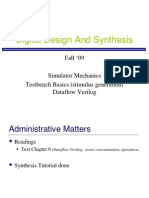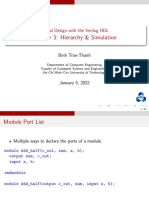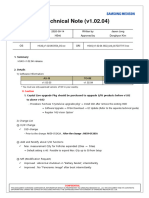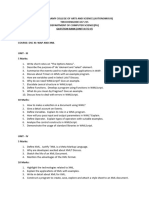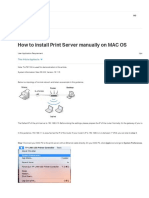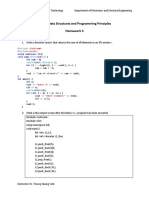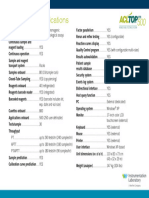0% found this document useful (0 votes)
129 views6 pages4-Bit Counter: 0000 0001 0010 ... 1110 1111 Rolls Over 0000 0001 ..
The document describes a 4-bit counter in Verilog that increments from 0000 to 1111 and then rolls over back to 0000. It contains a module with a clock and active-low reset inputs and a 4-bit output. The counter increments on rising clock edges unless reset is low, in which case it resets to 0000.
Uploaded by
HarunCopyright
© © All Rights Reserved
We take content rights seriously. If you suspect this is your content, claim it here.
Available Formats
Download as PDF, TXT or read online on Scribd
0% found this document useful (0 votes)
129 views6 pages4-Bit Counter: 0000 0001 0010 ... 1110 1111 Rolls Over 0000 0001 ..
The document describes a 4-bit counter in Verilog that increments from 0000 to 1111 and then rolls over back to 0000. It contains a module with a clock and active-low reset inputs and a 4-bit output. The counter increments on rising clock edges unless reset is low, in which case it resets to 0000.
Uploaded by
HarunCopyright
© © All Rights Reserved
We take content rights seriously. If you suspect this is your content, claim it here.
Available Formats
Download as PDF, TXT or read online on Scribd
/ 6



















